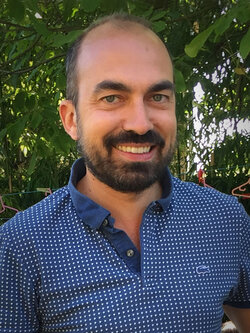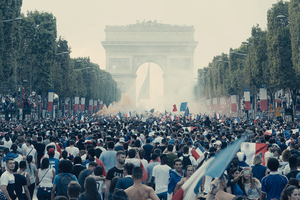A Look on Montfermeil
Interview with cinematographer Julien Poupard, AFC, about his work on Ladj Ly’s film "Les Misérables"Stéphane, who has just arrived from Cherbourg, joins the Anti-Criminal Brigade of Montfermeil, in the French département of Seine-St-Denis (93). He is going to meet his new colleagues, Chris and Gwada, two experienced cops. He quickly discovers the tensions between the various groups in the area. While the men become overwhelmed during an arrest, a drone has been filming their every action…
Featuring Damien Bonnard, Alexis Manenti, Djebril Zonga and Jeanne Balibar.
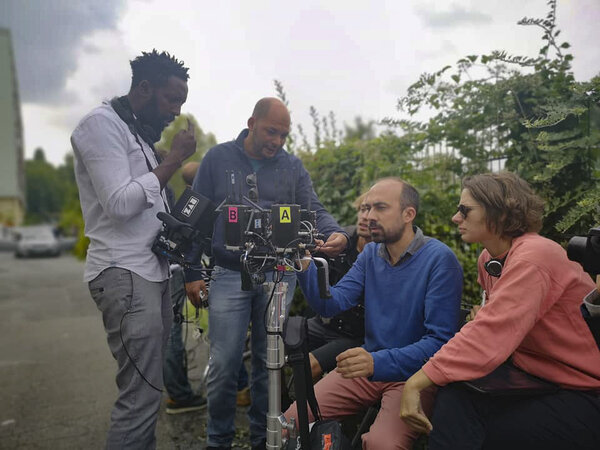
Tell us about your first meeting with Ladj Ly.
Julien Poupard : The film’s producers asked me to meet Ladj. We quickly spoke about Bloody Sunday, by Paul Greengrass, and Detroit, by Kathryn Bigelow. Ladj mentioned his documentary and docu-fiction experience and wanted to base this film on it: for him, the camera is a weapon. The image must vibrate.
Soon after, I went to the locations with Ladj and the producers. I was really taken aback because I discovered a left-behind, enclaved neighbourhood, where most of the buildings were falling apart. Despite that, I also felt a lot of fervour and human warmth. There was a striking contrast. Ladj knows everyone in the Bosquets council estate, he lives there and as he says himself, “Here, this is our open-sky studio…”
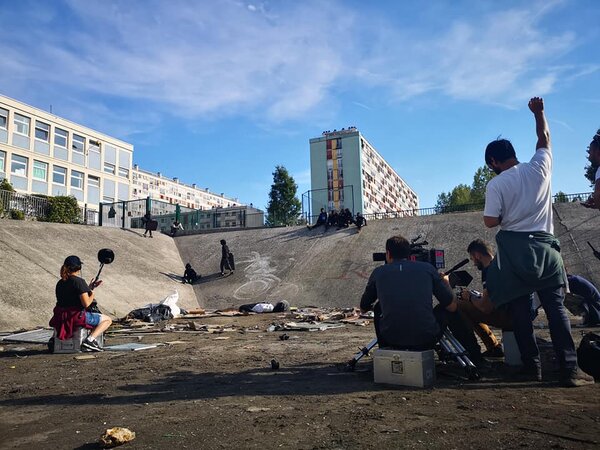
These places are often mediatized by people who are unfamiliar with council estates. How is Ladj’s vision of the banlieue different?
JP : Ladj grew up in Montfermeil. His film is completely inspired by real events that he saw or experienced. He knows everyone. Thanks to Ladj, we were able to shoot in the estate without hiding, without walking on eggshells, and we didn’t need a security team. We were "at home" with him. He would spend so much time shaking hands with everyone in the area that sometimes we were delayed!
More seriously, he is capable of bringing an authentic point of view, an insider’s point of view, one that is not at all cliché. The originality of Ladj’s approach is that he wants to show both the point of view of the young people in the banlieues with that of the police officers. These "Misérables" are the young people in the estate just as much as the police officers in Montfermeil! The cops and the residents are on the same level, living in the same misery. The problem comes from the system. It’s mainly a political problem and much more complex than it might appear.
What choices did you make to translate his voice onto screen?
JP : The camera adopts a point of view that is intentionally not moralistic. We wanted to film the police officers and the young people evenly, without taking sides. I chose to use three Angénieux Optimo zoom lenses (15-40mm, 28-76mm, 45-120mm) and Arri Master Grips, which are handles with integrated zoom motors. I really wanted to be able to make zooms that could be "felt". The Master Grips allow for very fine zoom adjustments (speed and acceleration, too). Thanks to the zoom and the motor, I could move about and zoom during the take. It was also the idea of having a camera in immersion, and a way of looking to humanize both the camera and the gaze. The zoom on the shoulder allows you to plunge the viewer into the action. We were obliged to design the takes in terms of field and axis, like a gaze that would guide the viewer.
To have as much mobility and reactivity as possible, we needed a light crew, which was the key for integrating our story into the environment of the estate.
I chose the Alexa Mini because it’s very light, robust, and pleasant to carry on the shoulder. It’s a camera that performs very well in bright lights.
Was the film entirely shot from the shoulder?
JP : No, we didn’t want to make a film that would be entirely "improvised" from the shoulder, but a film of staging. We needed an anchor point, an almost-documentary aesthetic that would allow us to capture pieces of the real, and film the unpredictable (that’s what Ladj likes and it’s a continuation of his documentary experience). But, at the same time, we used "cinema tools". For the act of police brutality, it’s an extremely nervous shoulder camera. For the bar, when the two cops go over the day’s events, we preferred static takes. We used the Steadicam for more choreographed takes, walks and master shots.
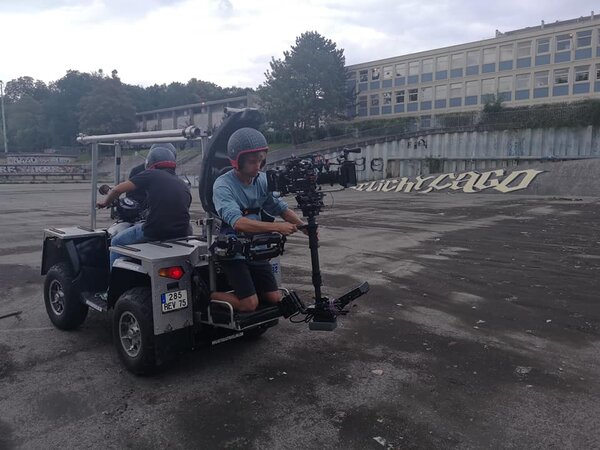
Why did you choose to film with two cameras?
JP : That was an idea that came from Ladj and the producers. It was not an easy choice given the film’s small budget and our idea of a small crew. Originally, the idea was that it would give us more material. At first, we attempted different ways of using it, but then it became something hybrid: sometimes a second camera, sometimes a second crew, sometimes a "documentary" crew to film the life of the neighbourhood, sometimes it would shoot “retakes” or bonus scenes. I’d like to thank Pierre Maillis-Laval, for his phenomenal work as operator of that second camera.
There are a lot of scenes that take place in cars, how did you film them?
JP : At the start of the film, during the report part of the film, we’ve got the camera on our shoulder in the car so that we can adopt the point of view of the rookie cop, played by Damien Bonnard, who is discovering the estate for the first time from the car. Then, gradually, when the dramaturgy of the events begins, we allowed ourselves travelling cars so that the image could be that of a fictional film. Tony Scott’s Man on Fire was a film that was very inspiring for us in that respect. In a travelling car, we had a camera at the front with a long-focal lens on the shoulder, an another on the side where the operator was seated on a track so that he could film the passengers in the front or in the back.
A word about postproduction?
JP : At the start of colour grading, with Ladj and the colourist Richard Deusy, we wanted a cold image, with a lot of contrast and texture. We did a lot of tests beforehand to come up with this look. But it didn’t work, it brought a sort of blackness into the image, and we wanted the estate to be warm. We went in the opposite direction, towards a warmer and softer image.
That’s also cinema to me, you’ve got to be careful not to fall into the trap of the recipes that work, of preconceived ideas. It’s that permanent questioning that I find so exciting and that allows you to make the story vibrant and alive.
In this film, a video filmed by a drone is what causes the action to shift… a metaphor for the power of images?
JP : Yes, in the film, a young man amuses himself by filming the daily life of the estate using a drone and, by chance, he happens to film an act of police brutality. This video, this objective proof of the act of brutality, is at the heart of the screenplay. By exposing police brutality, the camera becomes a weapon! This idea is directly inspired by Ladj’s experience.
As a very young man, he always had a little camera on him, and practiced what is now called "cop watching". As soon as he saw something happening, he’d unsheathe a camera. He filmed the 2005 riots in Montfermeil, the police response, and an act of brutality that inspired this film.
Unlike shoulder camera, the drone conveys an aesthetic that is absolutely non-human, almost robotic. The drone glides above it all… it provides distance, which enables the revelation of the objective truth of the police’s act of brutality. I wanted to use the drones to create distance, and to go from the micro to the macrocosm (a bit in the fashion of Andreas Gursky). But rather than a stylistic effect, the drone is above all an element of the story!
The camera is a weapon… Ladj is an unquestionably activist filmmaker who is going to push the envelope. He is very modest, very humble, and extremely determined.
(Interview conducted by Brigitte Barbier for the AFC, and translated from French by Alexander Baron-Raiffe)
 En
En
 Fr
Fr